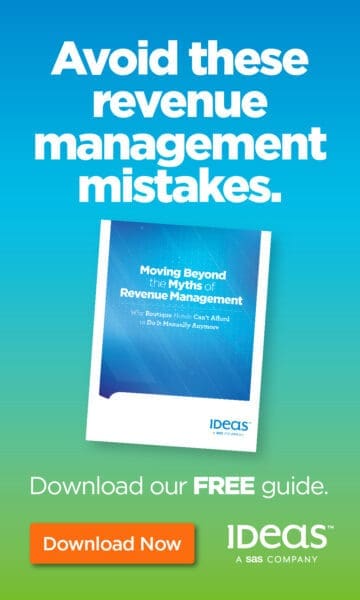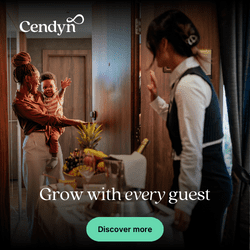
Customer effort is one of the metrics used in hotels to measure guest satisfaction. It is all about how easy it is to stay in your hotel, from the booking moment to post-stay. In other words, how easy it is for a customer to do something within the guest journey.
Either make a booking, modify that booking, ask for extra services, and more. What customers want is to get what they need in the easiest, most efficient and most timely way possible. And believe it or not, having a high customer effort can be one of the reasons why your guests are not returning to your hotel.
Let’s explore what high and low customer effort look like in practice, why it is impactful and how it can affect the strategy you need to develop to increase your guests’ satisfaction.
Customer effort in practice
Let’s take a look at the journey of 2 different guests in 2 different hotels.
Both guests went to the same city and booked a 2-night stay in 2 different hotels. One week before the day of arrival, they received a message saying they could only check-in from 2 pm onwards. However, both of them would arrive at 7 am in the city and had a lot of luggage to carry, making it difficult for them to visit if they need to carry it around.
Guest A in Hotel A
Guest A tried to reach out to the hotel to know if early check-in was possible. She sends an e-mail asking about it but two days later there is still no reply, so she tries to call. When she calls, the call keeps being redirected to someone else, and finally, after 45 minutes of waiting she gets to someone who is able to answer and tells her she just needs to pay 10 euros if she wants to check-in earlier.
Guest B in Hotel B
In the message mentioning the check-in time, there was a section titled “Do you want to check-in at a different time?” and there it explained that all the guest needed to do was pay 10 more euros.
At the end of the explanation, there was a button saying “Pay here”. The guest clicked and in less than one minute it was possible to check in at the time of their preference, while also increasing the hotel’s revenue.
Which guest do you think was happier? Or, from another perspective, which guest do you think was unhappy with their experience?
Why? Because guest A’s customer effort was much higher than guest B to whom the experience was very smooth and effortless to get to the exact same outcome. And, which hotel do you think will have a better guest relationship and higher satisfaction? Most would pick Hotel B as they provided an effortless guest experience.
Why is customer effort crucial?
1. Customers dislike complicated processes
The more complicated it is to go through their customer journey, the less likely customers will go through it again. According to study, 94% of customers with a low-effort experience claimed they would repurchase, while only 4% with a high-effort experience said the same.
In practice, what this shows is that if you make it too complicated for your guests to access information, get additional services, make changes to their booking, ask questions & get answers, and more, they will not be happy and, in the end, they will not come back.
2. Attention and motivation last very little
A customer’s current average attention span is 8 seconds. 8 seconds is the time you have to capture your guest’s attention and engage with them. This translates to the fast pace we all live in nowadays, and how everything needs to happen fast and efficiently.
What happens if you miss their attention? They will move on to the next option and you missed your chance.
3. It is easy to switch if your hotel is too complicated
STR estimates there are around 187 000 hotels in the world, which means 187 000 brands competing for guests to choose them.
If the experience is too complicated for a guest, they will just switch to another accommodation (and probably give bad reviews to yours). For them, it is not complicated. They forget about you and move on to the next accommodation.
Given that 89% of businesses compete on customer experience and that customers have the full power of choice with just a click, it’s highly competitive. Thus, if it is too complicated to go through their customer journey with a brand, they simply switch to another.
4. Effortless experience = a more enjoyable time
With fewer things to think about, customers can truly enjoy their time. In the same way that you enjoy a guided tour because you don’t need to look for the facts about the city yourself, guests prefer to have the experience without having to think about too many details.
This way they only need to focus on making the most out of it, without logistical details on their minds. And who is responsible for making sure that happens? The hotelier.
It is your role to plan the customer journey and make sure guests do not need to be on top of details such as reminding themselves of the check-in time or finding the answers to their questions on the website.
How to measure your customer effort score (CES)?
Now that you’ve learnt the importance of providing a low-effort experience to your guests. Have you ever measured your customer effort score (CES)?
One way you can measure it is by sending post-stay surveys. Asking them about their overall experience, what they liked and disliked about the stay, how easy it was to use a certain service.
For instance, you could ask “On a scale from 1 (very easy) to 10 (very difficult), how easy was it to reach out to our reception desk for help?” The CES is then calculated by dividing the sum of all scores by the number of survey responses.
Sum of scores ÷ Number of survey responses = your CES
You can also complement it by checking guest comments, ratings and messages on your website and social media. Pay close attention to negative feedback and identify specific areas where guests were dissatisfied.
Remember CES is not the only metric to measure your customer effort. Other metrics you should pay attention to include customer retention rate, net promoter score (NPS), average length of stay (ALOS) and more.
All these metrics are closely tied to guest loyalty, as a low effort experience can lead to returning customers who stay longer and recommend your hotel to others. Learn more about the other metrics here.
How can you decrease customer effort?
Considering all the reasons why customer effort needs to be lowered, you need to take action to be able to achieve it. Here are some key actions you should take.
Embrace guest self-service
Guests today value the convenience of taking care of things by themselves rather than reaching out to customer service. Just as how they can get music, food and clothes with just a few clicks, they expect the same ease with hotel service.
Harvard Business Review found that customers who have to talk to agents to solve their problems instead of using self-service are 10% more likely to switch to a new alternative. Therefore, self-service is a trend, or even a necessity if you don’t want to lose your customers.
One way is to integrate a guest app that allows online check-in. It gives guests the option to read all the information about their booking and the hotel from the comfort of their phone. You can also include the services you provide, the events that are happening, check-in and check-out time and more. So, guests no longer need to wait in long lines upon arrival.
Moreover, they can access digital keys, invoices and order food from the restaurant – all from the guest app without having to call for help. They can take control of their journey and cater to their needs at their convenience.
No need to repeat information
Don’t make guests repeat the same information over and over again to different staff members. That takes a lot of effort and will become frustrating for the guest experience.
A simple way to solve this is to have all the data about guests saved in one single place for the whole staff to check so that they don’t have to repeat it.
A hotel CRM can combine guest data from different platforms (such as the PMS, OTAs, F&B, etc), so you will have a central profile for each guest with the background of all the interactions they had with you as well as their personal information.
This way every member of the staff knows what they need to know about all guests without them having to tell it over and over again.
Discover more about what type of data can be saved and how to leverage it for optimal results.
Personalise each guest experience
Don’t make guests feel like they are just another number. Personalise your communication with each guest based on the information you know about them.
This personalisation can take several forms, such as reaching them in the channel of their preference (WhatsApp, e-mail, SMS, etc), and making personalised service offers.
With that, they don’t need to make the effort to look for the information and offers that suit their needs because you already consider that and tailor their experience for them.
Explore how a hotel CRM can help you elevate guest experiences by personalisation.
No extra effort to solve an issue
Give your guests all the information they need so they know what to expect. Don’t make them spend extra effort to solve any problems. This is valid throughout the whole guest journey.
For example, a unified inbox allows you to answer guests’ questions right away when they visit your website. When they have an issue during their stay, be there; when they leave the hotel and they need a payment confirmation or they lost something and they need your help, be there again.
These are just a few examples, but the conclusion is: be there for them all the time and make it easy for them to reach you.
How can you achieve all this? Through technology and automation.
Face-to-face interactions are directly associated with a personal touch, but it is good to bear in mind that not everything needs to be done manually. Automation can free your staff a significant amount of time from repetitive tasks and allow them to focus more on interacting with guests.
Want to know more about how automation can help you? Read here.
Evaluate, act & harvest loyalty
All in all, the summary is: you need to evaluate what is the current state of your customer effort, build a strategy to decrease it and in the end, increase customer satisfaction and loyalty.
This will result in happy guests, positive word-of-mouth, more successful cross-selling and upselling, and fewer costs thanks to less repetitive interactions with the staff. In the end, this means higher guest satisfaction and loyalty, more revenue and more guests.
If you want to get advice on how to decrease your customer effort and get closer to these results, feel free to talk with one of our experts for free and get tailored information for your specific needs!
Follow us on Linkedin to stay up to date with the new hospitality trends, and subscribe to our newsletter to get more tips and hacks for hotel marketing and operations.
































